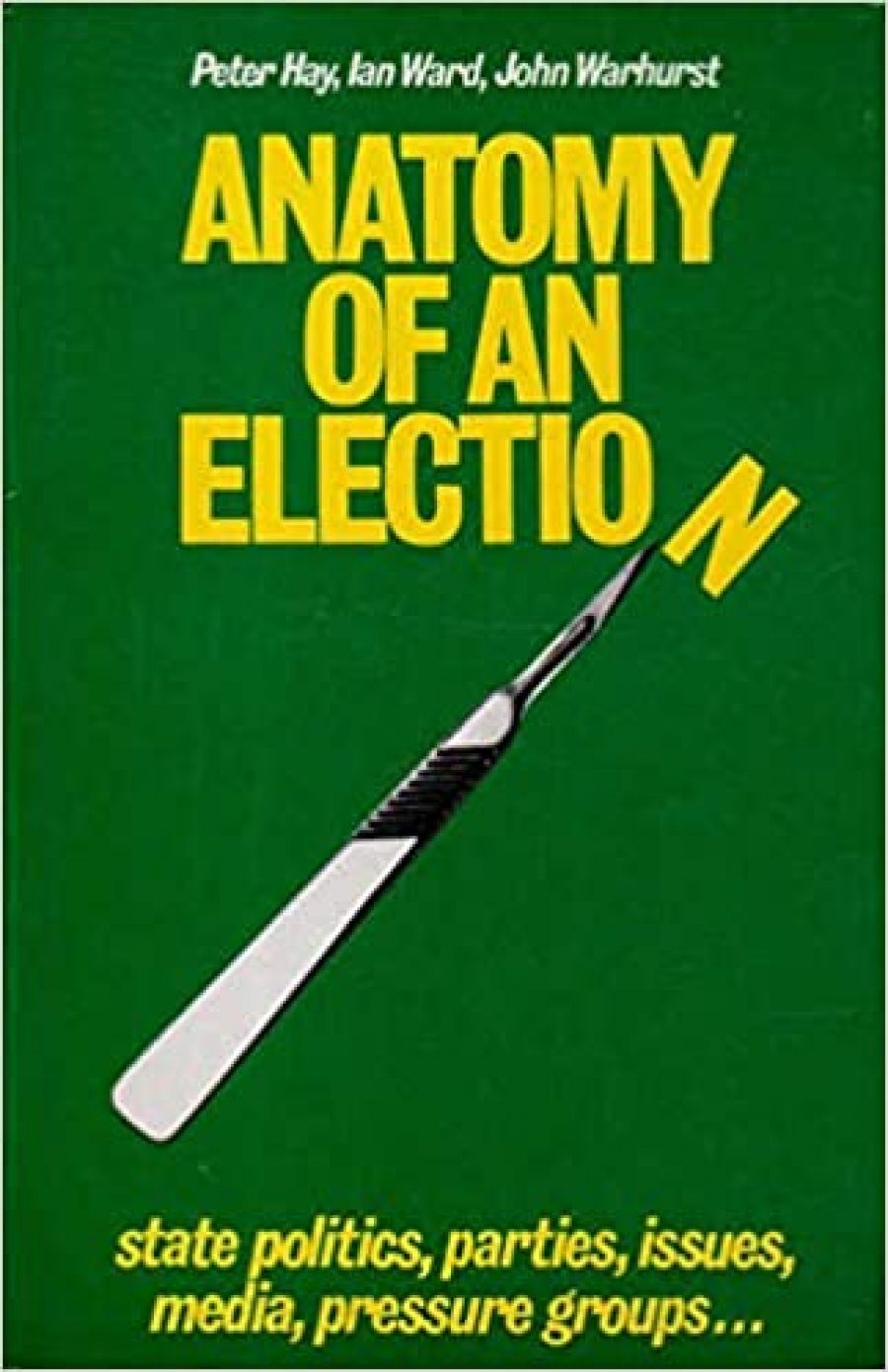
- Free Article: No
- Contents Category: Politics
- Review Article: Yes
- Article Title: How the donkeys voted
- Online Only: No
- Custom Highlight Text:
For many years there has been little study of politics and elections at the state level in Australia. It seems to have been assumed that only national politics is really important, and that voters made very little distinction between state and federal politics. Thus, the conventional wisdom on electoral behavior had it that voters reacted fairly predictably on the basis of their early political socialization and in response to a set of vague images of the parties which was generated largely at the national level and changed only slowly.
- Book 1 Title: Anatomy of an Election
- Book 1 Biblio: Hill of Content, $8.95, 268 pp
A number of recent studies have suggested that even if these assumptions were once true, the present situation is much more complex. A recent Age Poll, taken on the weekend of the South Australian election, shows a substantial capacity for variance between voting intentions at the state and federal level.
If we are to take state politics more seriously as an area of academic study there is a need for many more books like this one – the first of its kind on a Victorian election.
Part one provides background in the form of a historical survey of Victorian politics since 1945 and an overview of the 1979 campaign.
Part two looks at the campaign strategies of the protagonists. Andrew Theophanous’s article will doubtless stir some possums when he suggests that the ALP would probably have done better to have adopted a radical approach rather than that of ‘Vote Labor – you’ll hardly notice the difference’, as The Age paraphrased it.
Part three contains a revealing account by Leo Hawkins of inequities in campaign funding which predicts (one hopes correctly) that ‘the 1979 State election may be one of the last campaigns where access to the media by recognised parties is entirely dependent on the amount of donations they can lever out of their supporters’. There are also useful surveys of the social background of candidates and of ALP campaign workers (showing heavy reliance on non-blue-collar workers).
Two chapters in part four deal with campaigns in particular electorates. That by Paul Rodan investigates why Michael Shatin didn’t get the 5.5% needed in Mitcham, and, like a later chapter on the St Kilda by-election, ends up by considering the importance of the ‘donkey vote in close elections. As Shatin lamented, his surname wasn’t Aardvark (though Brian Dixon might well be thankful that his wasn’t Hardy). In looking at media coverage of the campaign, many contributors focus on the ‘pot of gold’ $400 million job creation scheme, and its treatment by the mass media, as a major disadvantage for the ALP. This was certainly the gut feeling of many armchair academics and journalists at the time, but it would be interesting to see how it affected voters.
Perhaps one of the more startling chapters in the book, for the city dweller, is that by Ian Ward dealing with the power of the provincial press in places like Mildura, for example, where the Sunraysia Daily outsells all the metropolitan dailies combined, and outsells The Age eleven to one.
Part six deals with various election issues and analyses the fact (if any) of pressure group campaigns. Included in this is a hard-hitting chapter by Leonie Sandercock on land deals (but buy The Land Racker also). The impact of tenant politics in St Kilda, transport, environmental issues, and the pro-life campaign are also discussed.
Unlike journalistic election analyses, the chapters have the great merit of being thoroughly documented. Anatomy of an Election is certainly a very welcome addition to Victorian political studies.


Comments powered by CComment